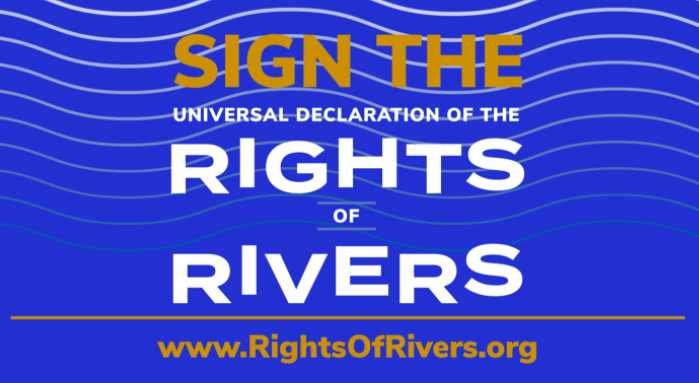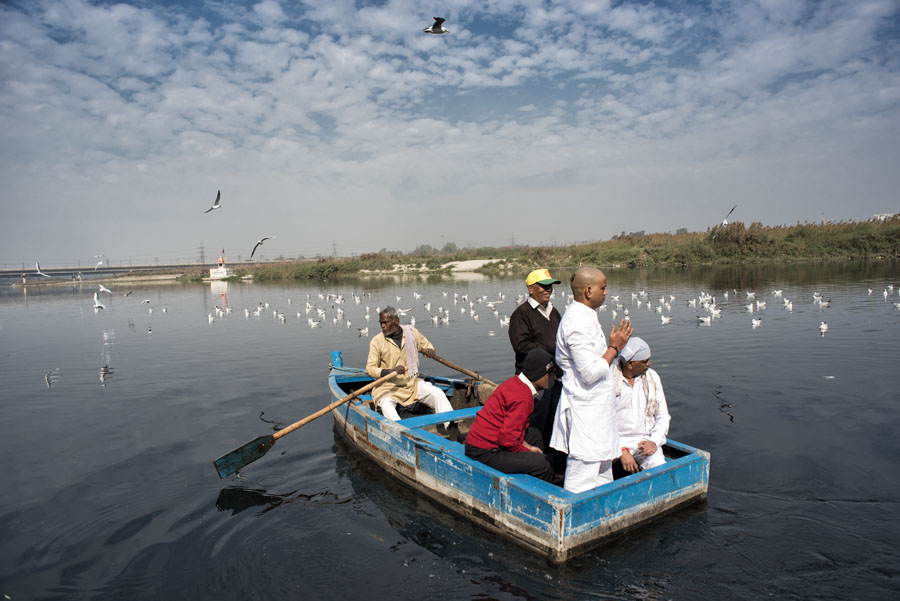By: Ayesha DSouza, South Asia Program Coordinator & guest writer Sarah Bardeen
What is a river?
The dictionary defines a river as “a natural stream of water of usually considerable volume” or, quite simply, a “watercourse.”
But at our “Dialogue on the Rights of Rivers,” which took place in Delhi, India from March 6-7, 2020, the answer wasn’t so straightforward.
Co-organized by Kalpavriksh, International Rivers, and LIFE, the dialogue aimed to achieve a common understanding of what legal rights for rivers look like. And while the workshop included symbolic elements – we opened with a water ceremony to honor our beloved watercourses – we focused much of our attention on the practical: What threats do rivers currently face? What prevents meaningful action to protect rivers? And, of course, how do we even define a river?
To answer these questions – and pose new ones – we brought together activists, academics, lawyers and researchers from India, Nepal and Bangladesh. Participants shared experiences from both South Asia and other parts of the world, and they explored thorny questions around how to implement river rights, what pitfalls we face, and how we can avoid them. The goal? To ultimately develop a set of guidelines for recognizing and enforcing the legal rights of rivers.
Global context
Our efforts to win legal rights for rivers do not exist in a vacuum: It’s all part of a burgeoning global movement to support the Rights of Nature.
“Rights of Nature” refers to the concept that nature possesses fundamental rights, just like humans. The movement has arisen in direct response to the failure of modern environmental laws to adequately address the escalating ecological crisis. To explore this movement in more depth, see our new report, ‘Rights of Rivers: A global survey of the rapidly developing Rights of Nature jurisprudence pertaining to rivers.’
It’s no secret that the planet’s ecological systems are deteriorating dramatically. A 2019 United Nations report on biodiversity found that human activity is driving mass extinction and global biodiversity loss, with dire ramifications for human well-being and society. Researchers warn that our warming world may be only a few years away from a critical “point of no return,” and that “transformative change” is needed to save humanity and nature.
The Rights of Nature movement is part of that transformative change. It draws its inspiration from Indigenous traditions that treat humans as part of nature, rather than distinct from it, and seeks to rewrite the anthropocentric legal system to give ecosystems and animals legal standing – similar to humans – in order to enforce laws and preserve a livable planet for all of us.
River rights in South Asia
South Asia’s transboundary rivers are some of the most unprotected in the world. We’re working to change that by building cross border communities’ understanding of the shared nature of these rivers, and by bringing together community knowledge with policymakers to protect these life-giving rivers.
The region has actually been at the forefront of the global movement to win rights for rivers. Various legal systems – including the national system in Bangladesh and a state-level court in India – have granted such rights in recent years, only to see those decisions stayed or tangled in questions around implementation. At the workshop, we aimed to untangle the many different procedural and implementation issues and begin to sketch out a framework for making similar legal decisions actionable.
The challenges, of course, are many.
Participants at the dialogue first identified the major threats facing rivers, including pollution; excessive water extraction; the construction of hydroelectric and other dams; sand mining; the privatization of long stretches of riverbank; large-scale hard infrastructure interventions (such as India’s interlinking rivers concept); and various types of community and transboundary conflict.
The group also looked at what’s standing in the way of legal rights for rivers. They identified the current extractive, anthropocentric model of development as a major culprit, as well as the profound lack of ecological understanding among decision-makers. They examined the pitfalls of centralized governance, which often excludes local communities from decision-making, and the lack of legally-mandated, democratic spaces to come together to share information and influence policy.
All agreed that winning legal rights for rivers is one way to fight the constant undervaluing and depredation of these vital sources of life.
Signs of hope
Despite the challenges we identified, there was also a powerful sense of momentum and optimism – and it came from all over the world.
International Rivers’ Monti Aguirre spoke of the growing river rights movement in Latin America, and shared that anti-dam movements in that region are increasingly looking to permanent river protection as a solution. Chiranjibi Bhattarai and Megh Ale detailed their groundbreaking work to protect Nepal’s last free-flowing river, the Karnali, and asked Indian colleagues to join them.
Others presented on the global Rights of Nature movement, detailing constitutional language and judicial decisions that are setting fascinating precedents for the Rights of Nature. Sharif Jamil detailed the recent judicial decision granting legal personhood to Bangladesh’s Turag River.
A first step
The “Dialogue on the Rights of Rivers” was just a first step. A long-term process of conversation, resource-sharing, collective strategizing and planning, and collaborative work lies ahead. But it was the first time we brought groups from across South Asia together to explore rights of rivers, and it’s already bearing fruit: We’ve formed four groups that are meeting regularly to grow this movement by gathering stories, raising awareness, planning actions and supporting new movements.
And, under all the work, there are signs pointing to the enlightened future that participants sought. Though we crafted a short-term definition of a river to use in urgent fights, we also created a more expansive definition of a river – the definition that we ultimately want to move towards. One of the recommendations says that a river must have the “right to behna, khelna and khilana (to flow, to play and to feed).”
It’s so simple that it’s revolutionary – a seed of hope pointing towards the future.
Take Action:

International Rivers’ South Asia program is part of the regional Transboundary Rivers of South Asia program. Supported by the Government of Sweden, TROSA is a collaboration with Oxfam, IUCN, ICIMOD and many local organizations that works on some of the more complex rivers in South and Southeast Asia: the Ganga, Brahmaputra and Meghna river systems, including their tributaries such as the Teesta, and Asia’s last last free flowing river, the Salween. TROSA works to promote improved cross-border governance of these transboundary rivers, support women’s leadership, and advance energy alternatives to large hydropower.
Featured photo: River Yamuna | Photo by: Blink O’fanaye/Flickr

